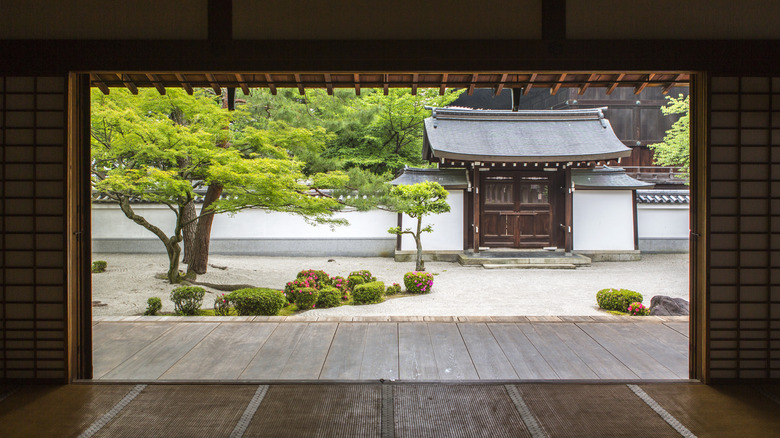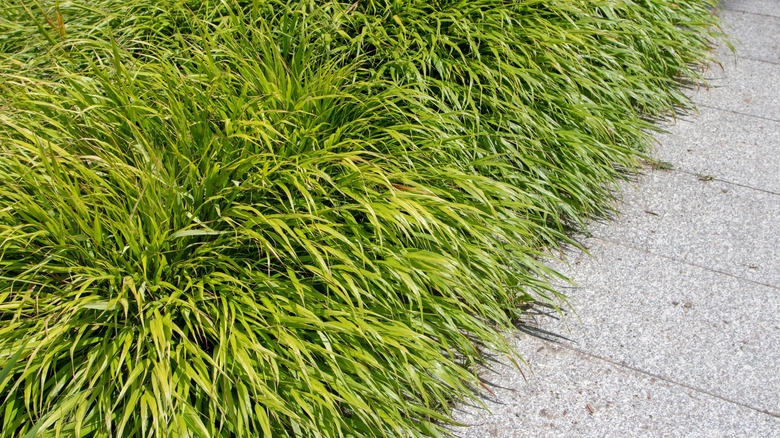Embrace The Beauty & Simplicity Of Using Grasses In Japanese Zen Garden Design
In the late sixth century, Zen Buddhist monks began creating simple gardens as a tranquil space for meditation. These karesansui, translated to dry landscape or dry mountain water in Japanese, gardens are commonly known as Zen gardens. What exactly are Zen gardens and what makes them different from a typical household garden? In essence, they are minimalist landscapes with meticulously raked gardens, boulders, and very few plants. Asymmetry, simplicity, and the contrast of curves and angles are the building blocks of these peaceful gardens.
During the 1200s, monks not only sought contemplation in these gardens, but they also used them to teach others about Buddhism. The website for Morikami Museum and Japanese Gardens in Florida describes karesansui gardens as "a means toward Zen self-examination and spiritual refinement...the antithesis of gardens designed for pleasure or the gratification of the senses. Instead, the spare, austere arrangements of rocks were expected to help clear the mind of worldly attachments." Hira-niwa, or flat garden — a later variation of karesansui gardens — brings in many elements of the dry landscape but with more plants and less spiritual symbolism.
Through these landscaping styles, gardeners aim to create a sense of movement, mimicking motion seen in nature. Adding clusters of grasses also provides graceful movement. The curved lines of raked sand and gravel or gently sloping hedges represent water, while solitary boulders sit like mountains among softer elements. Get inspired by these tranquil Zen gardens for your yard, and then plan out what you need to build your own meditative space.
Creating a balanced garden
As you consider your options for grasses, keep in mind that minimalism and balance are key for landscapes based on Japanese garden principles. Grasses, along with low shrubs and trees, can frame the dry landscape and balance the horizontal with the vertical. One of the popular grasses for Japanese-style gardens is Hakonechloa macra, also known as 'All Gold' Japanese Hakone Grass. A perennial is hardy to USDA zones 5 through 9, this mounding shade-loving plant comes in a number of cultivars, many with distinct variegation that add a vibrant splash to an otherwise neutral dry landscape.
For a plant with more height than the Japanese Hakone Grass, Miscanthus sinensus (Chinese silver grass) averages 4 to 9 feet and is hardy to zones 4 through 9. If you're looking for a plant that mimics water, its fluffy arching plumes will stand out like a botanical fountain. The Seattle Japanese Garden features the Miscanthus sinensus 'Strictus,' which develops yellow bands on its new summer foliage and blooms reddish clusters in September.
For a low grass, the narrow purple-black foliage of the Ophiopogon planiscapus 'Nigrescens,' or Black Mondo Grass, is a striking contrast against the brighter plants in your garden. This slow-growing grass is hardy to zones 5 to 10 and peaks at 6 inches, emphasizing the horizontal and vertical balance characteristic of hira niwa gardens. For more options, check out this list of 15 ornamental grasses for your yard.

